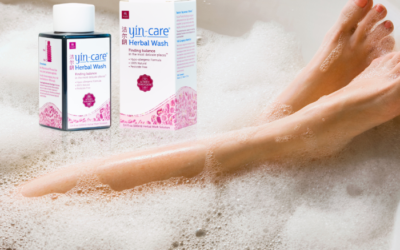7 Ayurvedic Practices for Your Daily Routine
Each day you approach wellness is a day you are committing to your health goals. You can add Ayurvedic practices to your daily routines to help heal your body and mind. Morning rituals include waking early, hydration, bowel regularity, oral hygiene, using a Neti pot, self-massage, yoga, meditation, and eating a breakfast that is approached by dosha type.
What is Ayurveda?
Ayurveda originated in India thousands of years ago and is a natural medicine system. The translation of Ayurveda is “life knowledge” – having been derived from the Sanskrit words Ayur, meaning life, and Veda meaning science and knowledge. Ayurveda medicine is based on universal interconnectedness, including the Prakriti (the body’s constitution) and doshas (life forces).
What are doshas?
A large part of Ayurveda is the concept that you and the universe are one. The five elements make the connection: Space, Air, Fire, water, and Earth. Our body, mind, and universe are made of; there is no separation between nature and you. These elements are combined in different ways called doshas or mind-body types. In Ayurveda, there are three doshas: Vata, Pitta, and Kapha.
Wake up and hydrate
When the sun rises, nature possesses sattvic or peaceful qualities. Depending on your dosha, you should wake at 6 a.m. (Vata), 5:30 a.m. (pitta), and 4:30 a.m. (Kapha). Because of this, according to Ayurveda approaches – you should try to go to bed early the night before to ensure adequate sleep. It is recommended that you try to be in bed by 10 p.m. This is when the body will renew and detoxify itself after a long day. When we do not wake up with the sun or get a good night’s sleep, it can clog our communication channels, leading to brain fog, depressed mood, and lethargy all day.
Both inside and out, Hydration is an essential part of Ayurveda practice. It is recommended that you splash your face with cold water and rinse out your mouth upon waking. Then rinse your eyes with cooler water and massage your eyelids. Drinking water is essential, too. Drink room temperature water from a copper cup when waking up. This will help to wash your gastrointestinal tract and flush your kidneys.
Get your digestion on track
During the night, your toxins build in the body. This elimination is another vital part of daily rituals, a bowel movement, which signifies a digestive system working correctly. Take Triphala with warm water one hour before sleep to cleanse and detoxify the digestive system. It is recommended that following your morning water – you squat during elimination to help with bowel regularity.
Add these to your oral hygiene routine
Oil pulling and tongue scraping are an important part of Ayurvedic morning routines.
Oil pulling
Oil pulling or swishing is a traditional Ayurvedic practice that uses edible oil (often sunflower or coconut oil) to swish around the mouth to pull out toxins, including bacteria. Ayurvedic oil pulling has been used for more than 5,000 years. In addition, it is believed to moisturize gums, reduce inflammation, whiten teeth, and increase saliva production.
Some oil pulling or swishing tips
- Use about a tablespoon of oil in your mouth and swish it around for about five minutes, slowly working up to fifteen to twenty minutes per day. You can do this while taking your morning walk or shower.
- Do not swallow the oil! You should always spit it out after swishing and rinse with warm water
- Oil pulling should never replace oral hygiene such as brushing or flossing!
Tongue scraping
When practicing good oral hygiene, don’t forget your tongue! You can do this by brushing your tongue and teeth with your toothbrush. However, some people find tongue scraping to be beneficial as well. Tongue scraping dates back to ancient times in India and is an Ayurvedic practice today.
- Clears toxins and bacteria from your tongue
- Removes dead cells from your tongue
- It helps prevent bad breath
- Enhances sense of taste and smell
- Supports overall oral and digestive health
- Stimulates internal organs gently
 The Neti pot and Shat Kriya
The Neti pot and Shat Kriya
Shat Kriya is an Ayurvedic practice involving Neti Kriya, cleansing the nostrils with a neti pot. Neti pots look like tiny teapots and have been around for centuries. Neti pots work by irrigating the nasal cavity to help alleviate congestion and relieve pain in the face and sinuses. The saline solution used in Neti pots helps increase the speed and coordination of the cilia (tiny hair-like structures in your nose) to help push out mucus. People who have allergies or want to cleanse their nasal cavity from environmental irritants find Neti pots very useful.
Give yourself a massage
Ayurveda self-massage, also known as the practice of abhyanga, is an oil massage you give yourself. Massage helps to reduce the tension in your muscles, supports circulation, helps with sleep, supports healthy vision, increases longevity, and nourishes the body.
Sneha is translated as both “love” and “oil” in Sanskrit – self-massage is an excellent way to practice self-care and show yourself some love every day with warm Ayurvedic oil. Choosing the best oil for abhyanga depends on your dosha or current balance, your Prakriti or ayurvedic constitution, and your environment.
Vata oils – ashwagandha Bala oil, mahanarayan oil, and ghee
Pitta oils – bhringaraj oil, Brahmi oil, and neem oil
Kapha oils – sesame oil, almond oil, corn oil
You can also use daily massage oil that is suited for all doshas.
 Add yoga and meditation
Add yoga and meditation
Ayurveda and yoga are interconnected as they are used together for healing purposes. While Ayurveda helps rejuvenate the body, yoga cleanses the mind and consciousness. It is essential to balance the mind and body—both yoga and meditation help accomplish this.
Vedic knowledge is an ancient science meant to ultimately help self-realization, relaxation, and peacefulness. There are six systems of Vedic philosophy, but the Yoga Sutras of Patanjali are most related to the ayurvedic approach to yoga and healing.
Yoga, meditation, and Ayurveda are all connected and not separate from each other – the purpose is to address all aspects of medicine and healing, including herbs, bodywork, lifestyle, diet, yoga, mantras, and meditation is used for healing the mind.
Benefits of yoga include improving flexibility, building muscle strength, helping with posture, preventing joint and cartilage, and supporting bone health.
Eat an Ayurvedic breakfast
Eating with your dosha needs in mind can be life-changing. Eating is one of the most vital functions we have next to breathing. Nourishing your mind and body with food is one of the three pillars of health. Ayurveda eating can help improve mental clarity, encourage longevity, give you a glowing complexion, improve digestion, and sharpen your mind.
A balanced diet should include the six Ayurvedic tastes or Rasas:
- Sweet – Water + Earth and decreases Vata and pitta and increases Kapha. Sweet foods include wheat, rice, dairy, dates, pumpkins, and licorice root.
- Sour – Water + Fire and decreases Vata and increases pitta and Kapha. Sour foods include fermented food, vinegar, lemon, tamarind, and wine.
- Pungent – Fire + Air and increases Vata and pitta and decreases Kapha. Pungent foods include onions, mustard, garlic, ginger, hot spices, and hot peppers.
- Astringent – Air + Earth and increases Vata and decreases pitta and Kapha. Astringent foods include alfalfa sprouts, okra, cranberries, pomegranate, and green beans.
- Bitter – Air + Space and increases Vata and decreases pitta and Kapha. Bitter foods include turmeric, raw green vegetables, and green tea.
- Salty – Earth + Fire and decreases Vata and increases pitta and Kapha. Salty foods include tamari, black olives, sea vegetables, Himalayan salt, and sea salt.
Each taste affects Vata, pitta, and Kapha, and when one of these doshas is imbalanced, these tastes can help bring equilibrium. Try to include all six tastes at each meal.

Jemile earned a degree in Food Studies and Writing and has worked for almost 23 years in the medical and health industries. She has been a digital marketing consultant for Acupuncture Atlanta since 2011 as the social media manager and content manager. Writing has been a childhood dream for Jemile and writing daily for clients in the health, wellness, food, and art industries have been phenomenal. Jemile is originally from Brooklyn, NY, and lives in the Hudson Valley, NY. She lives with her husband, two daughters, her dog, and two fish. You can contact Jemile via Linkedin, her mom blog, or her website, lunaroseconsulting.com



